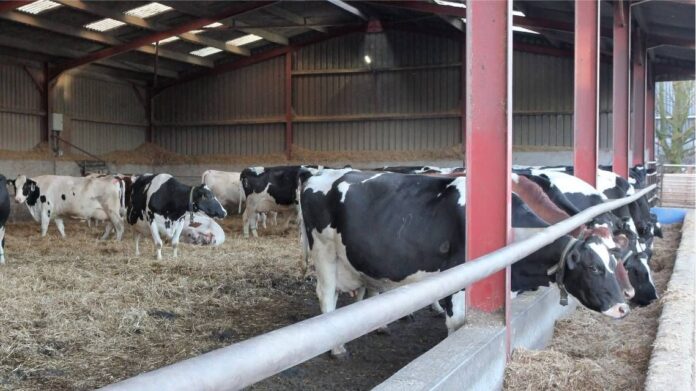Drying off cows
Alan Hopps, Senior CAFRE Dairying Adviser, who manages Business Development Groups (BDGs) in County Armagh, discusses drying off cows.
Farmers should plan now for a smooth transition to drying off. The transition from the end of one lactation to the start of another is now widely recognised as one of the key periods in any dairy system.
Careful management of this transition is crucial to secure milk yield, fertility and profitability in the following lactation.
Autumn-calving herds will be drying cows off from the beginning of July and entering this critical transition phase soon.
Now is the time to prepare for a successful transition rather than leaving it too late.
Drying off cows
As the dry off period for autumn calving herds approaches, aim to dry 90% of cows off in a body condition score of between 2.5 and 3.0.
If cows are outside this range, you can make changes more successful in late lactation than during the dry period.
Fat or thin late lactation cows can be put in separate feed groups where herds are computer fed.
Adjust feed to yield curves to manage condition score. If a cow is too thin, feeding an additional 1.5kg of concentrate per day for three months would provide sufficient energy for a gain of half a unit (0.5) of condition score.
You could also dry off thin cows early to allow them to gain condition. Monitor heifers coming to the end of their first lactation closely as they require energy for continued growth, milk production and condition score change, in some cases.
Dry cow forages this summer
The ideal dry cow forage is palatable and will have an ME between 10 and 11MJ per kilo of dry matter.
The total diet that a dry cow should consume will be around 12 kg of dry matter per day and contain a crude protein of between 13 and 14%. Low potassium forages will help in avoiding both sub-clinical and clinical milk fever.
Whole crops are an ideal feed for dry cows (in conjunction with grass silages) but not all dairy farms can grow them successfully.
Silage that has been grown to be more mature at cutting than the milking cow forage and has received no slurry will work better for dry cows.
In many cases, if dry cow silage is baled, it can provide greater flexibility with smaller batches of cows.
Now is the time to plan to make some dry cow silage and store it separately to the milking cow silage.
Chopped straw can be a useful addition to a dry cow diet on many farms.
However, this has to be chopped to under 6cm to prevent sorting. Some farms pre-chop straw using a contactor or their own machine, and this is generally more effective than using a diet feeder to chop straw.
Cow comfort and feed space
The period from drying off up until 21 days before calving is often termed the ‘far off’ dry group.
These cows will be heavier than cows in the milking herd. They will require more feed space to ensure they get adequate intakes.
Feed space of 85cm – 100 cm would be ideal for dry cows. This should be available even when you are at the peak of calving, and the dry cow shed is full.
Cubicle spacing is another issue to consider, with 120 – 135cm recommended for Holstein dry cows but you should base this on the size of cows in your herd.
Some of the changes to housing need not be expensive. It may involve adjusting existing cubicle spacing or providing more feed space in an existing shed.
Now is the time to think about these renovations when many herds are at grass.
Straw yards
Cows less than 21 days until calving or ‘close ups’ may benefit from being housed in a straw yard. This provides optimal comfort and space for lunging when cows are getting up.
Yards must be easily cleaned out and bedded regularly to ensure cows remain clean and dry. Space allowances of 12 -15 square metres per cow are recommended on straw.
Calving pens should be situated close to this straw yard so cows can be moved to them easily, either close to or at calving.
Good restraint facilities should be available so that you can easily milk cows after calving and 4 litres of colostrum fed to calves as soon as possible after birth.
A warm water tap close to the calving area will also allow for cows to be given post-calving drinks to ensure they are rehydrated quickly after calving.
Cows may be allowed to remain on the straw yard for up to a week after calving to ensure they are ready to be added to a milking group. Minimising stress is key to getting the next lactation started successfully and optimising milk yield.
Dairy farmers with autumn-calving herds should be planning now to improve transition cow management.
Small management changes or housing improvements can mean better milk yields from the same level of inputs.
The summer months are an ideal time to plan and implement these changes to allow for a more trouble-free and profitable calving season.
Other articles on That’s Farming:





